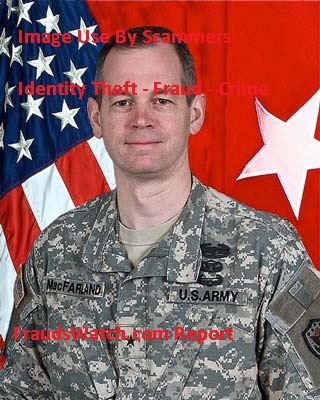From Quantitative Whiz to Convicted Felon: Inside Justin Murphy’s $3.5 Million Mara Investment Hedge Fund Fraud
The Fall of a Greenwich Hedge Fund Operator
The world of high finance, particularly the exclusive enclave of Greenwich, Connecticut hedge funds, often conjures images of sophisticated strategies and substantial returns. It was within this environment that Justin C. Murphy, a 50-year-old resident of nearby Stamford, operated Mara Investment Group. For years, Murphy cultivated an image of a savvy manager employing complex quantitative methods. However, this facade dramatically crumbled when Murphy stood before U.S. District Judge Victor A. Bolden in New Haven and pleaded guilty to federal charges of wire fraud and money laundering. His admission confirmed a devastating reality for his clients: the sophisticated investment operation was a lie, masking a scheme that defrauded investors of approximately $3.5 million.
Between approximately 2016 and September 2022, Murphy, through his entities Mara Investment Group, LLC, Mara Investment Management LP, and Mara Investments Global Management LLC (collectively “Mara”), solicited millions from unsuspecting investors. He promised a disciplined, quantitative investment approach designed for stable growth. Instead, according to court documents and statements, Murphy engaged in a far riskier strategy than disclosed, diverted substantial sums for his personal enrichment – including funding personal expenses and a relative’s startup – and systematically deceived his clients with falsified account statements and bogus tax documents reporting phantom profits. Parallel civil charges were also filed by the Securities and Exchange Commission (SEC), further detailing the extent of the deception.
The unraveling of Murphy’s scheme involved not only financial deceit but also international flight. After his indictment in September 2022, Murphy was located and arrested in Brazil in December 2023, where he remained detained for nearly eleven months before being extradited back to the United States to face justice. This case serves as a stark reminder that complex jargon and promises of exclusive strategies can sometimes be a smokescreen for outright theft, exploiting the trust investors place in financial professionals. The coordinated efforts of the FBI, IRS Criminal Investigation Division (IRS-CI), the Department of Justice (DOJ), the SEC, and international partners like Brazilian authorities highlight the increasingly global nature of financial crime enforcement and the lengths required to hold perpetrators accountable. This article delves into the mechanics of Murphy’s fraud, the “quantitative” illusion he crafted, the trail of stolen money, the legal pursuit across borders, and the critical lessons investors must heed to protect themselves from similar deceptions.
The Allure of Mara Investment Group: Promises of Sophistication and Stability
Justin C. Murphy, aged 49 at the time of his indictment and extradition, operated his purported hedge fund from the prestigious address of 125 Greenwich Avenue in Greenwich, Connecticut, though he resided in Stamford. The firm operated under several names – Mara Investment Group, LLC, Mara Investment Management LP, and Mara Investments Global Management LLC – potentially creating an image of a larger, more complex organization than it was. The core entity managing the investments appears to have been Mara Investment Management LP, a Delaware limited partnership, with Mara Investments LLC (a Delaware LLC where Murphy was principal owner and managing member) acting as the investment adviser. This structure, common in the alternative investment world, can sometimes add layers of complexity that make transparency more challenging for investors.
The pitch made to prospective investors centered on a sophisticated-sounding “quantitative strategy.” Murphy claimed Mara utilized a method that balanced long and short positions in securities, aiming for steady returns with limited risk. He specifically told investors he was trading conservative stocks and generating consistent profits. The fund’s own offering memorandum reinforced this image, stating the investment objective was “to achieve capital appreciation with limited volatility and low correlation to the overall market”. Further details provided to investors suggested a focus on sectors like real estate investment trusts, asset managers, banks, utilities, and healthcare, all driven by a complex, “proprietary” algorithm incorporating “momentum, volatility, and volume”.
This blend of sophisticated terminology, promises of stability, and the cachet associated with a Greenwich-based fund proved effective. At least eight investors were persuaded to entrust approximately $6.6 million to Mara Investment Management LP. The significant difference between the $6.6 million raised and the roughly $3.5 million ultimately determined to be stolen suggests a complex picture. It implies that while a large portion was directly misappropriated, some funds may have been used for the limited, unsuccessful trading activities acknowledged by the SEC, potentially returned to early investors in Ponzi-like fashion to maintain the illusion of success, or used to cover some operational expenses before the outright theft became the primary activity. This evolution from masking poor performance to active theft is a common trajectory in investment fraud schemes.
Deconstructing the Deception: Behind the “Quantitative” Curtain
Central to Murphy’s allure was the claim of employing a “quantitative strategy.” In legitimate finance, quantitative investing, or “quant,” relies on mathematical models, statistical analysis, and algorithms to identify investment opportunities, aiming to systematize trading decisions and remove human emotional bias. These strategies can range from statistical arbitrage (exploiting tiny price differences) to factor investing (targeting characteristics like value or momentum) and often involve complex computations. Due to their complexity and the proprietary nature of the algorithms used, quant funds are sometimes referred to as “black boxes,” where the inner workings are not fully transparent to outsiders.
This inherent opacity, however, can be exploited by fraudsters. Murphy promised investors a strategy focused on conservative stocks, limited volatility, and consistent profits. The reality, as alleged by prosecutors and the SEC, was starkly different. Murphy pursued a “much riskier investment strategy than he told investors”. Furthermore, the actual trading that did occur was minimal and unsuccessful. According to the SEC, the “limited securities trading… generated negligible profits,” and crucially, all trading activity in the Fund’s primary brokerage account ceased entirely after March 2019. By this point, the Fund’s value had reportedly plummeted to just $5,000 due to earlier withdrawals and Murphy’s misappropriation. The sophisticated quantitative engine investors believed was working for them had long since sputtered and died, if it ever truly existed as described.
The approximately $3.5 million difference between funds raised and funds remaining was not lost to market forces or strategy underperformance alone; it was systematically stolen. Court documents and the SEC complaint paint a detailed picture of this misappropriation:
- Funds Never Invested: Over $2 million (roughly one-third of investor capital) was never even deposited into the Fund’s brokerage account. It remained in a separate bank account controlled by Mara Investments.
- Personal Spending Spree: Murphy treated the Mara bank account and even the Fund’s brokerage account as personal piggy banks. He repeatedly paid his business credit card bills, which were laden with personal expenses: airline tickets, luxury hotels (including one near his office used as his primary residence), car rentals, meals, jewelry, and gym payments.
- Funding a Relative’s Startup: Over $550,000 was transferred from investor funds to a company owned by one of Murphy’s relatives, a business entirely unrelated to Mara Investments or its purported strategy.
- Unauthorized Business Expenses: Contrary to the offering memorandum, which stated Mara Investments would cover its own overhead, Murphy used over $900,000 of investor money to pay employee salaries and office rent.
With the fund depleted and no actual profits being generated after early 2019, Murphy resorted to elaborate fabrication to maintain the charade and potentially lure more investment. He represented to investors that their funds were performing well. This involved creating and distributing entirely falsified documents:
- Fake Account Statements: Investors received account statements showing healthy balances and profitable trading activity that simply did not exist. Examples include emails sent in January 2020 falsely detailing Fund performance nearly a year after trading stopped, a misleading portfolio spreadsheet provided in December 2020, and claims of positive returns in May 2021.
- Fraudulent Tax Forms: Murphy provided investors with inaccurate federal tax forms (like Schedule K-1s) that reported fictitious business income. This had the perverse effect of causing investors to pay real taxes to the IRS on profits that were never earned. For the 2020 tax year, for instance, investors received documents showing annual profits between approximately 6% and 41%, despite zero trading activity.
- Other Lies: Murphy also falsely claimed the Fund held accounts at several well-known brokerage firms, adding another layer of bogus legitimacy.
The stark contrast between Murphy’s claims and the documented reality reveals the depth of the deception. The following table summarizes key aspects of the fraud:
Mara Investment Group: Promises vs. Reality
| Claim/Promise | Source/Document | Reality | Evidence/Source |
|---|---|---|---|
| Investment Strategy (Quantitative, balanced, low-volatility) | Offering Memo, Investor Comms | Risky/Non-Existent Trading, Misappropriation | Court Docs, SEC Complaint |
| Fund Performance (Consistent profits) | Investor Comms | Negligible profits, trading ceased Mar 2019 | SEC Complaint |
| Use of Funds (Securities trading for profit) | Offering Memo | Personal expenses, relative’s startup, unauthorized business costs | Court Docs, SEC Complaint |
| Account Balances (Reflecting profits) | Fake Account Statements | Fund value dwindled to $5k by Mar 2019 \$ | SEC Complaint \ |
| \ | Tax Reporting (Accurate income) \ | Fake Tax Forms \ | False income reported, taxes paid on phantom profits \ |
| \ | Operational Costs (Paid by Mara Investments) \ | Offering Memo \ | Paid using investor funds (>900k salaries/rent) |
| Brokerage Relationships (Multiple major firms) | Investor Comms | Only one known brokerage account used for Fund | SEC Complaint |
The fact that trading ceased in March 2019 while Murphy continued issuing positive, fabricated reports well into 2021 marks a critical point. It signifies a shift from potentially masking incompetence or initial losses to conducting a deliberate, ongoing fraud entirely reliant on deception, characteristic of a Ponzi scheme where the illusion must be maintained at all costs. The use of fake tax documents is particularly egregious, inflicting direct financial harm on victims beyond their investment losses by causing them to pay taxes on money they never actually earned.
The Collapse and Capture: Investigation, Flight, and Extradition

The elaborate web of deceit spun by Justin Murphy eventually unraveled under the scrutiny of federal investigators. The timeline reveals a multi-year fraud culminating in an international pursuit:
- Fraudulent Scheme: Approximately 2016 through September 2022.
- Cessation of Trading: March 2019.
- Federal Indictment (D. Conn.): September 22, 2022.
- SEC Civil Complaint Filed: December 14, 2023.
- Arrest: December 6, 2023, in Brazil.
- Detention: Nearly 11 months in Brazil awaiting extradition.
- Extradition & U.S. Arraignment (Hartford): November 1, 2024.
- Initial Plea: Not Guilty entered on November 1, 2024.
- Guilty Plea: Entered late April 2025 (announced April 30, 2025).
- Current Status: Released on $250,000 bond since November 1, 2024, awaiting sentencing.
The investigation was a collaborative effort primarily led by the FBI and IRS-CI, agencies equipped to handle complex financial fraud and its frequent tax implications. The SEC conducted its own parallel investigation focusing on securities law violations.
Murphy’s decision to relocate to Brazil sometime after the scheme began to collapse (he was residing there by at least 2022) suggests an attempt to evade prosecution. Brazil is sometimes perceived as a jurisdiction from which extradition can be challenging, although treaties and cooperative frameworks exist. His arrest in December 2023 and subsequent 11-month detention underscore the complexities involved in international extradition proceedings. The successful extradition, facilitated by the DOJ’s Office of International Affairs and Brazilian authorities, demonstrates that international borders offer diminishing protection against prosecution for significant financial crimes.
However, this international cooperation came with a condition. The initial 23-count federal indictment included 15 counts of wire fraud (each carrying a maximum 20-year sentence), five counts of money laundering (max 10 years each), and three counts of tax evasion (max 5 years each). As part of the agreement securing Murphy’s extradition from Brazil, the U.S. government agreed not to pursue the three tax evasion charges. This concession likely reflects specific limitations within the U.S.-Brazil extradition framework, potentially related to the traditional reluctance of some countries to extradite for purely fiscal offenses (the “revenue rule”) or specific requirements regarding dual criminality for tax crimes.
Murphy initially pleaded not guilty upon his return to the U.S.. His subsequent change of plea to guilty several months later is a common legal development. Faced with the evidence amassed by investigators and the prospect of a lengthy trial with potentially severe penalties if convicted on multiple counts, defendants often choose to plead guilty to key charges in exchange for potential sentencing considerations, such as a reduction for acceptance of responsibility.
Understanding the Crimes: Wire Fraud and Money Laundering Explained
Justin Murphy pleaded guilty to one count of wire fraud and one count of money laundering. Understanding these federal offenses is crucial to grasping the legal gravity of his actions.
Wire Fraud (18 U.S.C. § 1343): This statute prohibits the use of interstate or international wire communications – including emails, phone calls, faxes, text messages, internet transmissions, and wire transfers – to execute a scheme intended to defraud someone of money, property, or honest services through materially false statements, promises, or omissions. To secure a conviction, the government must prove: (1) the existence of a scheme to defraud; (2) the defendant’s knowing and willful participation with intent to defraud; and (3) the use of interstate or foreign wire communications in furtherance of that scheme. Notably, the fraudulent scheme does not need to succeed, nor does a victim need to suffer an actual loss for the crime to be complete; the intent and the use of wires are sufficient.
Murphy’s conduct squarely fits this definition. He used emails to solicit investors with false promises about his strategy and performance, and later to send fabricated account statements and fraudulent tax documents. He likely used interstate wire transfers to move investor funds out of designated accounts for personal use or into his relative’s company. Each such transmission made in furtherance of the overall fraudulent scheme could technically constitute a separate count of wire fraud , explaining the initial 15 counts in the indictment.
Money Laundering (18 U.S.C. § 1956 / § 1957): Money laundering involves conducting financial transactions with funds known to be the proceeds of certain underlying crimes (“specified unlawful activity”), such as wire fraud. The crime occurs if the transaction is done with specific intent, typically: (1) to promote the carrying on of the specified unlawful activity; (2) to conceal or disguise the nature, location, source, ownership, or control of the illicit proceeds; (3) to avoid transaction reporting requirements; or (4) under §1957, simply engaging in a monetary transaction greater than $10,000 with criminally derived property. Money laundering is often described in three stages: placement (introducing dirty money into the financial system), layering (complex transactions to obscure the source), and integration (making the money appear legitimate).
Murphy’s actions after obtaining investor funds through wire fraud constitute money laundering. By taking the fraudulently obtained money (the proceeds of specified unlawful activity) and conducting financial transactions – such as transferring funds to his personal accounts, paying personal credit card bills for luxury goods and travel, or wiring money to his relative’s startup – he engaged in acts designed to conceal the illicit origin of the funds and integrate them for his personal benefit [20, 21(i), ]. These transactions represent the “layering” and “integration” stages. Furthermore, using some investor funds to make Ponzi-like payments to earlier investors could be viewed as transactions intended to “promote the carrying on” of the underlying wire fraud scheme by maintaining its facade [21(i), ].
Charging both wire fraud and money laundering is standard practice in such cases because the crimes are intrinsically linked. The fraud generates the illegal funds, and the subsequent handling of those funds constitutes laundering. This approach allows the prosecution to address the entirety of the criminal conduct – both the initial taking and the subsequent attempts to hide or use the proceeds – and often increases the potential sentencing outcome under the advisory guidelines. It underscores how routine financial activities, like paying bills or transferring money, become federal felonies when performed with illicit funds and criminal intent.
The Guilty Plea and Sentencing Calculus
Justin Murphy’s guilty plea to one count each of wire fraud and money laundering constitutes a formal admission of guilt and a conviction for these serious felonies. While this avoids a trial, it sets the stage for sentencing, a process guided by federal law and advisory guidelines.
The statutory maximum penalties for the counts of conviction are severe: up to 20 years in prison for wire fraud and up to 10 years for money laundering. However, judges rarely impose the absolute maximum. Instead, they determine an appropriate sentence after considering the U.S. Sentencing Guidelines (USSG) and specific factors outlined in federal statute (18 U.S.C. § 3553(a)).
The USSG provide a framework for calculating an advisory sentencing range based on the severity of the offense and the defendant’s criminal history. For financial crimes like Murphy’s, the guideline section §2B1.1 (Theft, Property Destruction, and Fraud) is paramount. A key driver of the sentence under §2B1.1 is the amount of loss caused by the fraud. The guideline includes a table that assigns point increases to the base offense level based on the loss amount.
In Murphy’s case, the established loss is approximately $3.5 million. According to the loss table in §2B1.1(b)(1) likely applicable at the time of sentencing (reflecting amendments effective November 1, 2023), a loss amount greater than $1.5 million but less than or equal to $3.5 million triggers an 18-level increase to the base offense level. Wire fraud typically starts with a Base Offense Level of 7 under §2B1.1(a)(1). Therefore, the loss amount alone elevates Murphy’s offense level significantly (7 + 18 = 25).
Other factors could potentially increase the offense level further, although their application would depend on specific findings by the court. These might include:
- Number of Victims: If the offense involved 10 or more victims, 2 levels are added (§2B1.1(b)(2)(A)). Given at least eight investors were involved , and potentially more impacted indirectly, this enhancement is plausible.
- Sophisticated Means: If the crime involved complex concealment efforts, 2 levels could be added (§2B1.1(b)(10)). Murphy’s use of multiple entities, falsified documents, and international movement might qualify.
- Money Laundering: The money laundering conviction itself (§2S1.1) often results in additional level increases, potentially 1 or 2 levels depending on the specifics and whether it’s deemed “sophisticated”.
Illustratively, a starting point of Level 25 (Base 7 + Loss 18) could easily reach Level 27 (with >10 victims) or Level 29 (if sophisticated means were also found). For an offender with no prior significant criminal history (Criminal History Category I), Level 25 suggests an advisory range of 57-71 months imprisonment. Level 29 suggests 87-108 months.
Conversely, a guilty plea typically earns a defendant a 2 or 3-level reduction for “acceptance of responsibility” under §3E1.1, which would lower the final advisory range. Even with this reduction, the substantial increase driven by the $3.5 million loss makes a sentence involving multiple years of imprisonment highly probable. Cases involving similar loss amounts frequently result in significant prison terms.
Finally, the judge must consider the §3553(a) factors, which go beyond the guideline calculation. These include the nature and circumstances of the offense (a multi-year, deliberate fraud involving breach of trust), Murphy’s personal history and characteristics, the need for the sentence to reflect the crime’s seriousness, promote respect for the law, provide just punishment, deter future crime, protect the public, and provide restitution to victims. An order for Murphy to pay restitution for the full amount stolen is almost certain.
As of the announcement of his plea, Murphy remains free on a $250,000 bond, with a sentencing date yet to be scheduled. The plea agreement likely stipulated guilt on only one count of each charge, despite the indictment listing many more. However, under the guidelines’ ‘relevant conduct’ rules (§1B1.3), the sentence will be based on the entirety of the criminal scheme and the total loss amount, not just the specifics of the single counts formally pleaded to. This ensures the punishment reflects the full scope of his admitted criminal behavior.
Echoes of Deceit: Contextualizing the Mara Investment Fraud
While the specifics of Justin Murphy’s scheme are unique, the underlying tactics echo patterns seen in numerous other investment frauds, particularly those involving hedge funds or alternative investments. Understanding these recurring themes provides valuable context:
- Misrepresentation of Strategy and Performance: A common thread is the use of complex or proprietary-sounding strategies to lure investors, coupled with fabricated performance data. Bernard Madoff famously claimed a “split-strike conversion” strategy that was entirely fictitious, producing impossibly consistent returns. Bayou Management simply lied about its poor performance. EIA All Weather Alpha touted extraordinary returns while providing falsified statements. Murphy’s “quantitative strategy” fits this pattern perfectly.
- Misappropriation of Assets: Diverting client funds for the manager’s personal benefit is a hallmark of fraud. Madoff used client money like a personal bank account. Andrew Middlebrooks (EIA) bought jewelry and paid personal bills. Eugenio Verzili and Arturo Rodriguez (Juno Mother Earth) looted $1.8 million to pay firm operating costs and personal expenses. The founders of EmpiresX leased a Lamborghini and shopped at Tiffany & Co. with investor funds. Murphy’s spending on personal items and his relative’s startup aligns directly with this behavior.
- Falsified Documents: To conceal poor performance or outright theft, fraudsters routinely create fake documentation. Madoff provided fake trade confirmations and account statements. EIA and Bayou also used falsified reports. Murphy’s creation of bogus account statements and tax forms was essential to prolonging his scheme.
- Lack of Transparency and Independent Oversight: Fraud thrives in opacity. Madoff controlled all aspects of his advisory business, including custody and execution through his affiliated broker-dealer, avoiding independent verification. Bayou fired its legitimate auditor and created a sham replacement owned by one of the principals. While the specifics of Mara’s operational structure regarding independent custodians or auditors are not fully detailed in the available documents, the ease with which Murphy misappropriated funds and fabricated reports strongly suggests significant deficiencies in independent oversight.
- Ponzi Scheme Dynamics: Many investment frauds eventually devolve into Ponzi schemes, using new investor money to pay redemption requests or promised returns to earlier investors. This was the core of Madoff’s operation and was also alleged against EIA All Weather Alpha. The SEC noted Murphy made “payments to some investors” as the fund collapsed, suggesting Ponzi-like activity was employed to maintain the facade.
Comparing Murphy’s $3.5 million fraud to infamous cases like Madoff’s $65 billion Ponzi scheme highlights differences in scale and duration. However, the fundamental mechanics – exploiting trust, misrepresenting strategy, fabricating results, and stealing money – are remarkably similar. Cases like EIA All Weather Alpha , Bayou Management , and Juno Mother Earth show these tactics recurring across different managers and purported strategies. The fact that both Murphy and the founders of EmpiresX fled to Brazil might suggest a (perhaps misplaced) belief among some fraudsters about its status as a safe haven, although Murphy’s extradition proves otherwise. These comparisons demonstrate that while the specific narrative may change (quantitative strategy, crypto bot, etc.), the playbook for investment fraud often remains depressingly consistent.
Investor Alert: Red Flags from the Mara Investment Scam
The Justin Murphy and Mara Investment Group case provides critical, real-world examples of red flags that investors should be vigilant for when evaluating any investment opportunity, especially in the less regulated space of private funds:
- Opaque or Overly Complex Strategies: Murphy touted a “proprietary” quantitative strategy. While quant strategies can be legitimate, if a manager cannot explain their approach in understandable terms, or if verification seems impossible, it’s a major warning sign. Complexity should not be mistaken for legitimacy; it can be a tool to obfuscate.
- Promises of High, Consistent Returns with Low Risk: The allure of steady profits with limited volatility was central to Murphy’s pitch. Such promises are almost always unrealistic. High returns invariably come with high risk, and “guaranteed” investment returns are a classic fraud indicator. Be especially wary of returns that seem uncorrelated to broader market movements.
- Lack of Transparency & Independent Verification: Fraudsters often control the flow of information. Key safeguards include having assets held by a reputable, independent third-party custodian (not the advisor), verification of trades by this custodian, use of an independent fund administrator for accounting, and audits by a well-known, independent accounting firm. Murphy’s ability to misappropriate funds and issue fake statements points to a lack of such independent checks.
- Account Discrepancies & Falsified Documents: Murphy provided fake account statements and, significantly, fake tax documents. Investors should carefully scrutinize all documents. Do reported returns make sense? Do tax forms (like K-1s) align with actual cash received or independently verifiable asset values? Question any discrepancies. Be aware of sophisticated imposter documents or websites. The issuance of fake tax forms is a particularly dangerous red flag, indicating a deep level of fraudulent intent.
- Issues with Registration and Licensing: Always verify the registration status of the investment advisor/firm (using SEC IAPD) and any brokers involved (using FINRA BrokerCheck). Check for any disciplinary history. While registration doesn’t guarantee honesty, operating without required registration, or having a history of violations, is a significant warning. Searches for Justin C. Murphy connected to this Mara Investment entity on public databases yield unclear or negative results, which itself should have been a red flag for potential investors. The SEC complaint confirms Mara Investments acted as an investment adviser and violated relevant regulations.
- Pressure Tactics and Secrecy: While not explicitly detailed in the Murphy snippets, be wary of any pressure to invest quickly (“act now” or “limited opportunity”) or requests to keep the investment confidential. Legitimate opportunities allow time for proper review.
The Murphy case powerfully illustrates that sophisticated language is no shield against fraud. Quantitative strategies, while legitimate tools, can be used as cover for theft precisely because of their complexity. Furthermore, the creation of official-looking documents like tax forms reporting phantom income highlights the lengths fraudsters will go to maintain their deception and the critical need for investors to independently verify all information.
Fortifying Your Finances: Essential Investor Due Diligence
Protecting oneself from investment fraud requires proactive and skeptical due diligence. The Mara Investment collapse underscores the importance of looking beyond the sales pitch and verifying claims through independent sources. Key steps include:
- Verify Registration and Background: Use free tools like FINRA BrokerCheck and the SEC’s Investment Adviser Public Disclosure (IAPD) website to confirm the registration status of individuals and firms. Review their employment history and check for any disclosures (customer complaints, regulatory actions, terminations). Do not rely solely on information provided by the promoter.
- Understand the Investment: Insist on a clear explanation of the investment strategy, the underlying assets, and the associated risks. If you cannot understand it, or if the manager is evasive, walk away.
- Scrutinize Offering Documents: Carefully read the Private Placement Memorandum (PPM), prospectus, or other offering documents. Pay attention to fees, lock-up periods, risk disclosures, valuation methods, and the stated roles of service providers.
- Demand Independent Third-Party Verification: This is crucial.
- Custodian: Confirm that fund assets are held by a reputable, independent custodian. Receive account statements directly from the custodian, not just the manager.
- Administrator: Check if a well-regarded independent fund administrator handles the fund’s accounting and reporting.
- Auditor: Verify that the fund is audited annually by a reputable, independent accounting firm with expertise in auditing investment funds. Be wary of unknown auditors or potential conflicts of interest.
- Conduct Independent Background Checks: Search for news articles, regulatory filings (like SEC’s EDGAR database ), and any lawsuits involving the manager or firm. Check references, but seek out independent sources as well.
- Critically Analyze Performance Claims: Are returns too good to be true or suspiciously consistent regardless of market conditions?. Request audited financial statements to verify performance. Compare claimed returns against appropriate benchmarks.
- Trust Your Instincts and Seek Independent Advice: If something feels wrong, pay attention. Discuss any potential investment, especially unsolicited offers or complex private placements, with a trusted and independent financial advisor, accountant, or attorney who has no stake in the deal. Do not be rushed into making a decision.
- Review Statements Diligently: Regularly review account statements received directly from the independent custodian. Reconcile them with any reports from the manager. Question any unauthorized trades or discrepancies immediately.
Effective due diligence is an active process of verification, not passive acceptance. It requires questioning claims and seeking confirmation from objective, independent sources. The presence of multiple red flags – such as an opaque strategy combined with a lack of independent oversight and unrealistic return promises – should be treated as a serious warning sign, prompting investors to heighten their scrutiny or avoid the investment altogether.
Conclusion: Lessons from the Mara Investment Collapse
The case of Justin C. Murphy and Mara Investment Group serves as a potent cautionary tale. A facade of quantitative sophistication and Greenwich prestige masked a straightforward, yet devastating, $3.5 million fraud built on lies, misappropriation, and fabricated documents. Murphy’s flight to Brazil, subsequent extradition, and guilty pleas to wire fraud and money laundering mark the end of his scheme but leave behind significant financial and emotional damage for his victims.
The key lessons from this collapse are timeless yet crucial in today’s complex financial landscape. Investors must cultivate healthy skepticism, particularly when presented with strategies that seem overly complex or promise unusually consistent or high returns. Trust, while important, must be earned and continuously verified through rigorous, independent due diligence. This means looking beyond the manager’s narrative to confirm registration, understand the strategy, scrutinize documentation, and insist on the involvement of reputable, independent custodians, administrators, and auditors. The red flags highlighted by the Murphy case – opacity, unrealistic promises, lack of independent verification, document irregularities, and registration issues – must be recognized and heeded.
Financial fraud remains an ever-present danger, constantly adapting its methods and narratives to exploit new technologies and investor interests. Vigilance, education, and a commitment to thorough verification are the best defenses. Resources like FINRA BrokerCheck, the SEC’s IAPD database, and investor education platforms like Investor.gov and fraudswatch.com empower individuals to conduct essential checks. Furthermore, reporting suspected fraud to regulatory authorities like the SEC, FINRA, or state securities regulators is not just a right but a vital step in protecting others from falling victim to similar schemes. By learning from the costly mistakes made in cases like Mara Investment Group, investors can better navigate the markets and safeguard their financial futures. Sources used in the report




